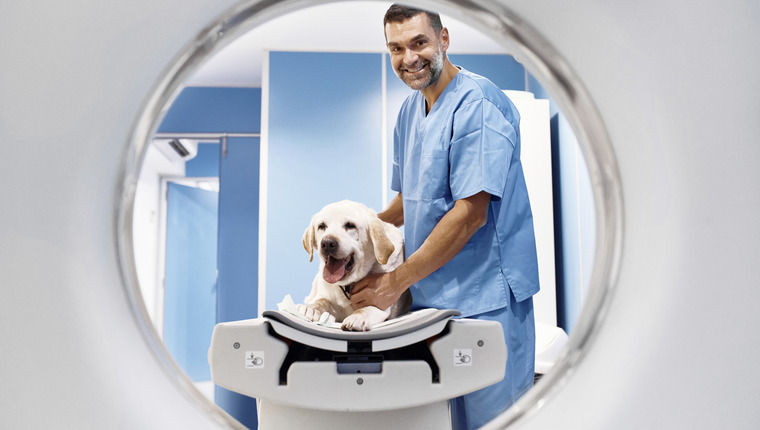
A new study using machine learning technology has allowed researchers to reconstruct how a dog sees the world, reports Science Daily.
This past September, a team at Emory University used fMRI scans to capture the brain activity of two very good dogs—a Boston Terrier mix named Daisy and Bhubo, a Boxer mix. Amazingly, both dogs sat down to watch three separate 30-minute videos, all without leashes or restraints. Afterward, a machine learning algorithm compiled the data and analyzed the dogs’ neural patterns.
Apparently, the team at Emory’s Canine Cognitive Neuroscience Lab has long been at the forefront of canine cognitive science. Over a decade ago, the lab published the first fMRI scans of a dog’s brain. At the same time, researchers of that project developed new techniques to get dogs to enter an MRI machine willingly and stay perfectly still.
Actions Over Objects
Interestingly, the study’s results show that dogs’ brains are vastly different from humans. The data revealed that dog brains respond to action and movement. Contrastingly, human brains tend to focus on objects.
Gregory Berns, an Emory professor of psychology and corresponding author, speculates that our dogs’ unique biology is to blame. “We humans are very object-oriented,” Berns said in a university press release. “There are 10 times as many nouns as there are verbs in the English language because we have a particular obsession with naming objects. Dogs appear to be less concerned with who or what they are seeing and more concerned with the action itself.”
Berns also noted that differences in dogs’ visual systems help them detect motion. Furthermore, he believes that there is an evolutionary necessity for this type of perception. Namely, eating and not being eaten.
With this amazing new technology, it’s exciting to consider what new cognitive mysteries will be uncovered next. It seems that our furry companions are full of surprises.









